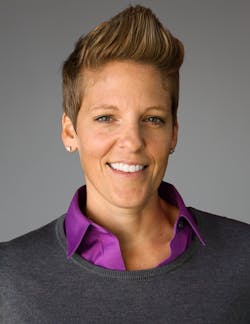The Key to Attracting and Retaining Supply Chain Talent
Traditional talent searches focus on a wide variety of qualifications. However, it might make more sense to narrow the focus and seek the core capability that ensures success -- the ability to solve problems.
The opportunity to use this skill is what attracted Shauna Bowen to the field and keeps her in it. “My passion is for solving problems and helping people,” says Bowen, who is currently senior vice president of Click to Delivery at Radial, and has decades of engineering and supply chain industry experience including senior leadership roles at Walmart. “These are both drivers that resonate within supply chain roles in an organization as they create opportunities to innovate.”
Processes to attract talent
The most effective way to bring talent to this sector is to clearly spell out the roles of the job. “In supply chain roles people bring real value to the company in terms of solving the many real-world supply chain problems,” says Bowen. “Traditionally the field was thought of as solely procurement and logistics, and while that is still part of the job, today's supply change challenges continue to evolve and make room for innovation. For example, supply chain professionals figured out how to source and distribute PPE during the pandemic.”
Job descriptions need to take into account the candidate’s objectives. “Companies need to understand that the goals and passions of an individual must align with the goals of the company.” And her advice to candidates is to choose a job that fits. “If you aren’t answering that inner why, at some point you will peter out in your job. Choose the industry and job that matches your passion.”
Furthermore, both companies and employees need to have a wider perspective. “It’s more about breadth of knowledge, rather than staying laser focused in one vertical. The tendency to concentrate on one specific area might move talent to the top of the vertical at a quicker pace, but it will stop at one point.” A broader outreach across the company will benefit both the individual and the company. The best decision I ever made was to take a lateral role for a position early in my career. If I had taken a promotion I would have stayed in that area and never been able to move onto the larger roles I have held.”
How does this translate to daily activities?
Each workday, Bowen asks herself one question. What am going to do today that adds value and has a purpose? The idea of having work fulfill an individual’s purpose is fairly new but very important, especially to younger workers. Having work fufill a purpose and being able to pay that forward is now a workplace goal. What’s unique about Bowen’s approach is that she centers her actions on an achievable scale. “I do feel there is a multiplier effect on the concept of paying it forward. In a leadership role, you are making an impact in various areas. So, leading a team of 200 people you can impact them and they in turn impact ten people each, so you are at 2,000 people that you have impacted and added value to in their lives.”
Showcasing supply chain's evolution
Supply chain responsibilities are now front and center in organizations, in large part due to the pandemic. Many supply chain executives moved from their offices into the board rooms as the importance of the function expanded. “It’s not just moving supplies from one place to another,” said Bowen. “It’s all the way upstream and all the way downstream. This is especially true in e-commerce. The touchpoints are very deep, especially with last mile delivery. So, the evolution of how we define supply chain has broadened which explains why the function has a seat at the table.” The importance of this function to the organization needs to be highlighted when attracting candidates.
Additionally, a further expansion of supply chain responsibilities lies in the increased role of ESG in supply chain management. “While the impact of change, for example increasing miles per gallon at a large organization is wide-reaching, smaller companies also have an impact. With 100 companies moving the needle just 1%, it’s a collective impact that can be substantial,” Bowen says. Often employers overlook pointing out to future candidates this important function of the job.
Retaining the workers you have attracted
“I work with various generations, and I am firmly of the opinion that people typically don’t leave companies they leave people,” Bowen explains. “As long as you drive engagement with your workforce they will stick around. A loyalty factor still exists. But you have to the right relevant offering. When you talk about being inclusive, and what the needs of the associate are, that’s where the loyalty comes in. There has to be a work-life balance and as long as companies are supporting that balance and really care for their people, instead of being just transactional, you will have better retention regardless of what generation that talent is sitting in.”
Bowen is living proof of that loyalty. Starting at Boeing, after earning her degree in engineering, she moved to Walmart and earned her MBA while working there. Her continued pursuit of problem solving has led her to current career where she saw a unique opportunity to tackle the challenges of e-commerce. And true to her belief in a strong work-life balance her current company offers a culture that supports both her personal and professional goals. “At the end of the day I am still adding value to the field and that’s the endgame for me.”
About the Author

Adrienne Selko
Senior Editor
http://mhlnews.com
Adrienne Selko is also the senior editor of EHS Today and a former senior editor of IndustryWeek.

